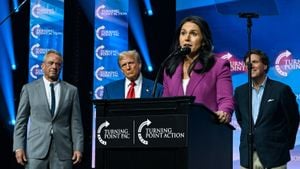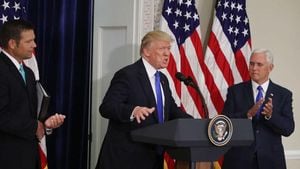The simmering tensions between the United States and China over Taiwan have now entered another tense chapter as military exercises reveal China's formidable air capabilities. Most recently, Beijing's military drills showcased its upgraded H-6 bombers, which are capable of long-range strikes—a clear signal of its determination toward Taiwan and, by extension, the United States.
Last month, amid rising geopolitical tensions, China conducted extensive military exercises around Taiwan, deploying the latest versions of its air and naval strike capabilities. The most notable weapons featured during these operations were the H-6 bombers, which have been modernized to remain at the forefront of military technology. Initially introduced during the Cold War, these aircraft have been adapted to operate effectively deep within the 21st century.
During the recent war games, frequently dubbed 'Joint-Sword 2024B,' the H-6s were shown on state-controlled media taking off for missions, with the Chinese military explicitly warning Taiwan about attempts at independence. Taiwan's Ministry of National Defense observed over 150 Chinese military aircraft and numerous naval vessels surrounding the island, firmly highlighting the rising tensions.
Specifically, the Taiwanese defense ministry monitored three groups of H-6 aircraft conducting simulated attack drills within Taiwan's Air Defense Identification Zone (ADIZ), illustrating China's aggressive military posturing. To bolster its own defensive measures, Taiwan stated it was employing joint intelligence operations to monitor these incursions and maintain readiness among its air, sea, and missile forces to counter threats.
This is not merely posturing; analysts have flagged the modernized H-6 bombers as significant threats. Some variants can launch ballistic missiles armed with nuclear warheads or long-range land attack missiles. These capabilities, coupled with aerial refueling options, allow these bombers to strike at targets well beyond their home bases, extending power projection deep across the Pacific.
U.S. officials appear acutely aware of the situation. Pentagon spokesperson Major Pete Nguyen emphasized America's commitment to safeguard its interests and work collaboratively with Taiwan as tensions rise, reassurering the public by stating, "We are prepared to respond to any threat and protect the homeland." Meanwhile, Defense Secretary Lloyd Austin has expressed the viewpoint of avoiding imminent or inevitable conflict with China.
Beijing, for its part, remains adamant about claims over Taiwan, insisting on its territorial integrity. While the Taiwanese government vehemently rebuffs such assertions, the environment has grown immensely charged. With Donald Trump returning to the political scene, many are speculating how this will influence U.S.-China relations and Taiwan's diplomatic standing.
China’s military capabilities are becoming increasingly dynamic, showcasing both its long-term planning and readiness to engage closely with its military assets. The H-6, built under license from the Soviet Tupolev Tu-16, continues to evolve, with recent estimates indicating around 230 of these bombers are operational within the Chinese arsenal.
Unlike the United States, where the production of the B-52 bomber ceased decades ago, China has consistently updated the H-6 series. This contrasts not just with technology but also military doctrine; the designs are not just flying machines but integrated components of China’s operational tactics for potential future conflicts.
Military experts have suggested if combat were to break out, the H-6 bombers could be integral to operations, focusing on targeting strategic locations such as airfields, command centers, and logistics hubs. Such tactics would likely combine stealthy missile strikes with overwhelming air assaults to disrupt defenses comprehensively.
State media has also provided glimpses of potential engagement strategies, showcasing H-6 aircraft collaborating with fighter jets and drones to identify and target adversaries effectively. Such coordinated strikes could be devastatingly effective, leading experts to assert the U.S. must devise strategies to neutralize these assets before they engage.
David Deptula, the former U.S. Air Force Lieutenant General, has strongly advocated for preemptive measures against the H-6 fleet, recommending they be targeted before deployment since any conflict would only escalate with time.
Overall, the recent military exercises and the capabilities demonstrated by the H-6 bombers paint a stark picture of the military readiness on both sides. For Taiwan, the growing strain on its defense strategy requires constant vigilance, as the potential for conflict looms larger than ever.
Engagements like these underline the urgency for both U.S. and Taiwanese officials to strategize effectively against the backdrop of rising tensions, uncertain international relations, and the ever-present specter of military confrontation with China.



